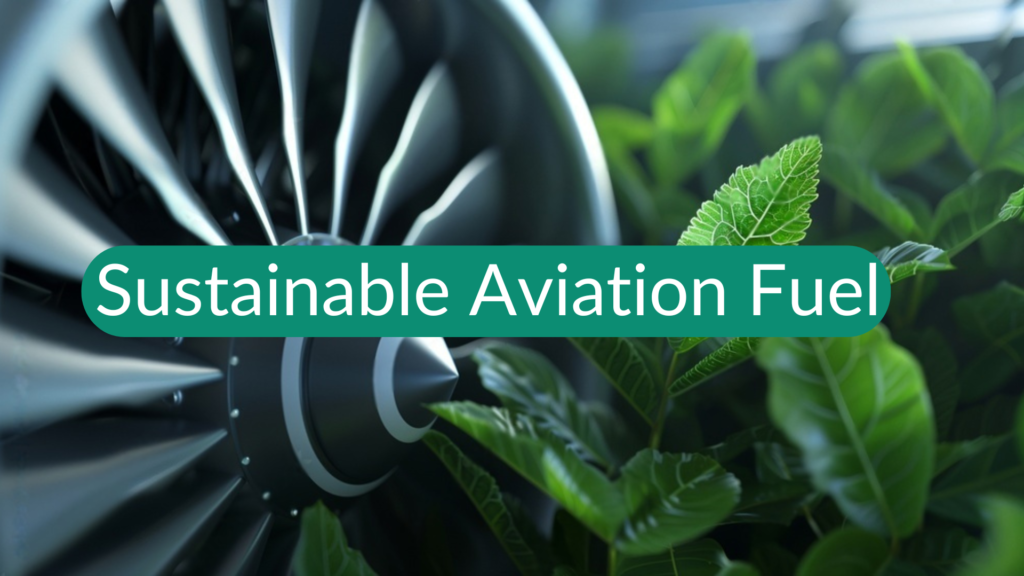
The aviation industry has taken a major step towards a sustainable future. The International Air Transport Association (IATA) unveiled a new methodology for reporting emissions reductions from Sustainable Aviation Fuel (SAF). This standardized approach aims to enhance transparency in emissions accounting, strengthen market confidence, and support aviation’s 2050 net-zero ambitions.
A Breakthrough in SAF Accounting
The new IATA methodology directly addresses the challenge of ensuring credible and consistent reporting of SAF’s environmental benefits. Airlines can now track emissions reductions in a structured manner, aligning with both regulatory frameworks and voluntary commitments. This initiative is particularly significant in the lead-up to the launch of the IATA SAF Registry in April 2025, which will further bolster the integrity of SAF transactions globally.
Marie Owens Thomsen, IATA’s Senior Vice President for Sustainability and Chief Economist, highlighted the methodology’s significance:
“The IATA methodology will provide a consistent approach to accounting for the environmental benefits of SAF purchases, regardless of location. This is an essential part of the upcoming IATA SAF Registry, which will allow airlines to claim SAF benefits in a transparent and accountable manner.”
Key Features of the IATA Methodology
The methodology introduces a range of features that will play a critical role in streamlining emissions calculations and reporting:
1. Purchase-Based Emissions Calculations
- Emissions reductions will be determined based on SAF purchases, independent of where the fuel is uplifted.
- This aligns with the International Civil Aviation Organization’s (ICAO) Carbon Offsetting and Reduction Scheme for International Aviation (CORSIA), ensuring regulatory compliance.
2. Flexible Emissions Factors
- Airlines can select either tank-to-wake (TTW) or well-to-wake (WTW) emissions factors.
- This flexibility allows them to meet different compliance and sustainability targets.
3. Prevention of Double Counting
- A standardized approach prevents double-counting of emissions reductions, safeguarding the credibility of SAF claims.
- This ensures airlines and investors can trust the integrity of reported carbon savings.
4. Clear Accounting for Additionality
- Airlines can account for SAF’s emissions reductions without pre-judging additionality, provided there is no double-counting.
5. Per-Passenger and Per-Shipment Calculations
- The methodology includes guidance on calculating emissions reductions on an individual basis.
- This enhances transparency and allows for more precise reporting across different aviation operations.
Aviation’s Commitment to Transparency and Climate Action
The methodology is underpinned by four core principles designed to strengthen industry-wide trust in SAF adoption:
- Fair and Consistent Accounting – Creating a level playing field for all airlines.
- Double-Counting Prevention – Ensuring emissions reductions are not counted multiple times.
- Environmental Integrity – Strengthening the credibility of SAF emissions claims.
- Transparent Data Reporting – Establishing a verifiable system for emissions tracking.
By integrating these principles, IATA is paving the way for a robust SAF market, providing airlines with the confidence to invest in sustainable fuel solutions.
The Role of the IATA SAF Registry
Set to launch in April 2025, the IATA SAF Registry will offer airlines a centralized platform to record, track, and verify their SAF transactions. This registry will enhance industry transparency and provide essential emissions monitoring tools.
For airlines seeking to meet both regulatory obligations and voluntary sustainability goals, the registry will be an indispensable resource. It will also provide mechanisms for demonstrating compliance with initiatives like CORSIA and the Science-Based Targets initiative (SBTi).
The Broader Impact on Aviation Sustainability
This initiative marks a major milestone in aviation’s decarbonization journey. As the industry moves towards a low-carbon future, the adoption of a transparent SAF emissions reporting system will:
- Encourage Greater Investment in SAF Production – A standardized accounting system will incentivize investors and producers to scale up SAF availability.
- Support Airlines in Meeting Sustainability Targets – Providing a clear pathway for emissions reductions and regulatory compliance.
- Enhance Market Confidence – With an internationally recognized methodology, SAF transactions will gain legitimacy among regulators, airlines, and stakeholders.
The aviation industry has long grappled with the complexities of emissions reporting, and IATA’s new methodology is a major step in simplifying this process while ensuring credibility.
Conclusion: A Turning Point for SAF Adoption
The introduction of IATA’s SAF accounting and reporting methodology is a game-changer for aviation sustainability. By setting a global standard, it not only strengthens airlines’ ability to track and report emissions reductions but also lays the foundation for a functioning SAF market.
As the industry works towards net-zero emissions by 2050, solutions like the IATA SAF Registry and structured accounting methodologies will be crucial in ensuring genuine progress. Stakeholders across the aviation sector, including organizations like VURDHAAN, continue to support such initiatives by providing expert guidance on emissions compliance and sustainability strategy implementation.
The aviation sector now has a clear framework for accelerating SAF adoption, ensuring that sustainability goals translate into measurable action.
